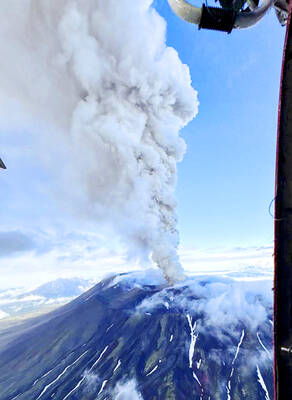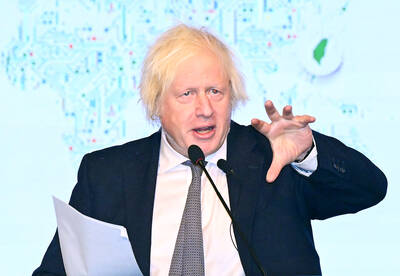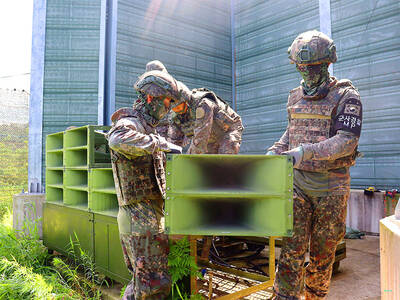Asians and North Americans may really see the world differently.
Shown a photograph, North American students of European background paid more attention to the object in the foreground of a scene, while students from China spent more time studying the background and taking in the whole scene, researchers at the University of Michigan say.
Researchers led by Hannah-Faye Chua and Richard Nisbett tracked the eye movement of the students -- 25 European Americans and 27 native Chinese -- to determine where they looked in a picture and how long they focused on a particular area.
"They literally are seeing the world differently," said Nisbett, with Westerners focusing on objects and Asians taking in more context to view a scene holistically.
He believes the differences are cultural.
"Asians live in a more socially complicated world than we do," he said. "They have to pay more attention to others than we do. We are individualists. We can be bulls in a China shop, they can't afford it."
The key thing in Chinese culture is harmony, Nisbett said, while in the West the key is finding ways to get things done, paying less attention to others.
And that, he went on, goes back to the ecology and economy of thousands of years ago.
In ancient China farmers developed a system of irrigated agriculture, Nisbett said, in which farmers had to get along with each other to share water and make sure no one cheated. This is especially the case in rice farming, he said.
Western attitudes, on the other hand, developed in ancient Greece where more smallholders ran individual farms, raising grapes and olives, and operating like individual businessmen.
Thus, differences in perception go back at least 2,000 years, he said.
Aristotle, for example, focused on objects. A rock sank in water because it had the property of gravity, wood floated because it had the property of floating. He would not have mentioned the water. The Chinese, though, considered all actions related to the medium in which they occurred, so they understood tides, they understood magnetism, long before the West did.
He illustrated this with a test asking Japanese and Americans to look at pictures of underwater scenes and report what they saw.
Americans would go straight for the brightest or most rapidly moving object, he said, such as three trout swimming.
The Japanese were more likely to say they saw a stream, the water was green, there were rocks on bottom and then mention the fish.
The Japanese gave 60 percent more information on the background than the Americans and twice as much about the relationship between background and foreground objects, he said.
In the latest test, the researchers tracked the eye movement of the Chinese and Americans as they looked at pictures.
The Americans looked at the object in the foreground sooner -- a leopard in the jungle, for example -- and they looked at it longer. The Chinese had more eye movement, especially more eye movement in the background and back and forth between the main object and the background, he said.
"The Americans are seeing an object and explaining behavior in terms of the object and the Chinese are seeing the context more," Nisbett said.
Reinforcing the belief that differences are cultural, he said, was the finding that when they study Asians raised in North America, they lie between native Asians and European-Americans, and are sometimes closer to Americans, in the way they view scenes.
Kyle Cave of the University of Massachusetts at Amherst said: "These results are particularly striking because they show that these cultural differences extend to low-level perceptual processes such as how we control our eyes. They suggest that the way that we see and explore the world literally depends on where we come from."
Cave said researchers in his lab have found differences in eye movement between Asians and Westerners in reading, based on differences in the styles of writing in each language.
However, Cave added, Nisbett's results are consistent with the idea that the difference is cultural.
"What they are finding seems likely to be more than just differences from reading," he said.
"When you look beyond this study to all of the studies finding cultural differences, you find that people from one culture do better on some tasks, while people from other cultures do better on others. I think it would be hard to argue from these studies that one culture is generally outperforming the other cognitively," Cave said.

Authorities have detained three former Taiwan Semiconductor Manufacturing Co (TMSC, 台積電) employees on suspicion of compromising classified technology used in making 2-nanometer chips, the Taiwan High Prosecutors’ Office said yesterday. Prosecutors are holding a former TSMC engineer surnamed Chen (陳) and two recently sacked TSMC engineers, including one person surnamed Wu (吳) in detention with restricted communication, following an investigation launched on July 25, a statement said. The announcement came a day after Nikkei Asia reported on the technology theft in an exclusive story, saying TSMC had fired two workers for contravening data rules on advanced chipmaking technology. Two-nanometer wafers are the most

Tsunami waves were possible in three areas of Kamchatka in Russia’s Far East, the Russian Ministry for Emergency Services said yesterday after a magnitude 7.0 earthquake hit the nearby Kuril Islands. “The expected wave heights are low, but you must still move away from the shore,” the ministry said on the Telegram messaging app, after the latest seismic activity in the area. However, the Pacific Tsunami Warning System in Hawaii said there was no tsunami warning after the quake. The Russian tsunami alert was later canceled. Overnight, the Krasheninnikov volcano in Kamchatka erupted for the first time in 600 years, Russia’s RIA

CHINA’s BULLYING: The former British prime minister said that he believes ‘Taiwan can and will’ protect its freedom and democracy, as its people are lovers of liberty Former British prime minister Boris Johnson yesterday said Western nations should have the courage to stand with and deepen their economic partnerships with Taiwan in the face of China’s intensified pressure. He made the remarks at the ninth Ketagalan Forum: 2025 Indo-Pacific Security Dialogue hosted by the Ministry of Foreign Affairs and the Prospect Foundation in Taipei. Johnson, who is visiting Taiwan for the first time, said he had seen Taiwan’s coastline on a screen on his indoor bicycle, but wanted to learn more about the nation, including its artificial intelligence (AI) development, the key technology of the 21st century. Calling himself an

South Korea yesterday said that it was removing loudspeakers used to blare K-pop and news reports to North Korea, as the new administration in Seoul tries to ease tensions with its bellicose neighbor. The nations, still technically at war, had already halted propaganda broadcasts along the demilitarized zone, Seoul’s military said in June after the election of South Korean President Lee Jae-myung. It said in June that Pyongyang stopped transmitting bizarre, unsettling noises along the border that had become a major nuisance for South Korean residents, a day after South Korea’s loudspeakers fell silent. “Starting today, the military has begun removing the loudspeakers,”